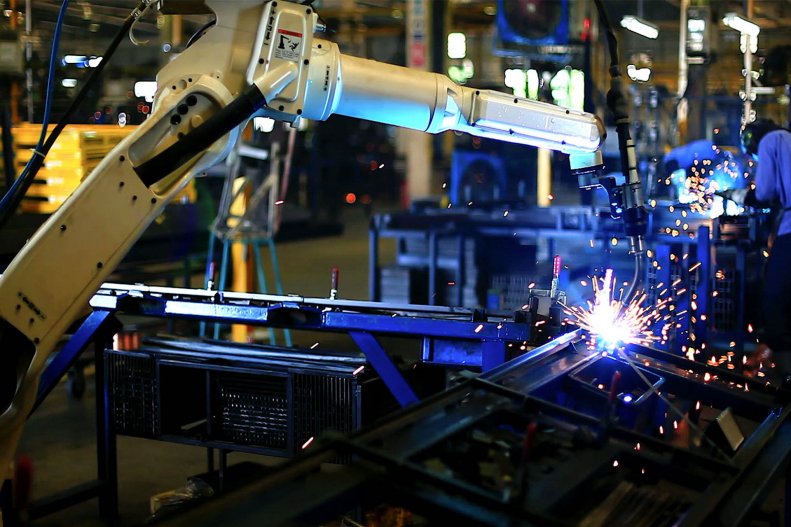What is the connected consumer?
Significant advancements in technology over the years have played out in favour of today’s consumer. Widespread availability of internet means that today’s consumer is in a better position to make more informed purchase decisions anywhere, anytime, on any platform. Businesses must also evolve to keep pace with consumer demand, and fintech is increasingly important for companies to improve how they interact with their customers. Keeping pace with technological advancements will enable companies to engage their customers more deeply in a digital economy.
What is the digital economy?
The rise of smartphones has given consumers globally unprecedented access and choice when it comes to shopping. Digitally-savvy companies now offer a broader selection of goods, faster delivery, secure payments and 24/7 mobile access. E-commerce represents the part of this new digital economy that consumers are most familiar with today. Even though it feels like e-commerce has been around for a long time, just 18% of global retail sales are transacted online1 . We believe this should allow for many years of double-digit growth in the future.
- U3RhdGlzdGEsIDNyZCBGZWIgMjAyMg==
16%
of goods were bought online in 2020 – doubling the 2015 amount, and are only likely to rise2 .
- RXVyb21vbml0b3IsIE1hcmNoIDIwMjE=
41%
of consumers shop daily or weekly via mobile devices or smartphones, compared with 12% in 20163 .
- R2xvYmFsIENvbnN1bWVyIEluc2lnaHRzIFN1cnZleSAyMDIxLCBQd0M=
51%
of projected absolute value growth for retail over 2020-2025 is contributed by digital, as the crisis-inspired boom is expected to lead to a permanent channel shift.2 .
- RXVyb21vbml0b3IsIE1hcmNoIDIwMjE=
What does this mean for investors?
Traditional businesses are reaching a critical juncture where they must adapt to the digital age or be disrupted by more digitally-savvy firms. Retailers are rapidly adapting to the needs of these connected consumers to make shopping quicker, easier and more personalised. We believe this represents a significant structural opportunity for investors seeking long-term growth. Digital-native millennials are also reaching their peak spending years, while older, wealthier generations are also increasingly connected and comfortable shopping online.
Investing in the digital economy
We see these trends as creating opportunities across the entire e-commerce value chain as traditional businesses embrace the digital economy. We refer to these opportunities as the four Ds:
- Discovery: Search engines, online advertising and social media are increasingly the starting point when searching for and/or discovering products and services online.
- Decisions: E-commerce, web portals and mobile apps provide consumers with convenient and reliable product choices. Companies involved in the decision-making process are dominated by online disruptive firms taking market share from traditional businesses.
- Delivery: The proliferation of e-commerce has led to rapid growth within digital payments, and is also pushing companies to look for supply chain efficiencies to deliver goods everywhere within a specified timeframe – also known as ‘same-day’ or ‘next-day’ delivery.
- Data & enablers: Digital companies that help not only digital natives, but also digital migrants who need to transform themselves to remain relevant.
Why now for the digital economy?
We believe the digital economy is a multi-year investment theme. As such, we believe the ongoing shift from offline to online will continue to benefit trends such as online commerce, digital media consumption, electronic payments and digital transformation.
Furthermore, the digital economy revolution is still in its early stages, with a growing number of new business segments emerging. For instance, the ‘Sharing Economy’ comprises high-profile companies, which are currently private, that will likely list in the coming years, expanding the investable universe and diversification opportunities.

Our Digital Economy strategy
Our Digital Economy strategy aims to capture the long-term growth potential of the entire e-commerce value chain.
View fundsTo help people invest in the companies that are embracing these changes, we have adapted our internal research capabilities to incorporate the five main trends that we believe represent the future for long-term fundamental growth investing.

Ageing and lifestyle
Ageing population trends are creating opportunities for long-term growth investors due to growing demand for healthcare, leisure, wellness, housing and more.

Automation
More industries can now use robotics offering greater sophistication, precision for repetitive or hazardous tasks, and may provide affordable labour solutions.

Clean Economy
Innovative companies are creating solutions to address pressures on scarce natural resources and the need for greenhouse gas emission reduction.

Transitioning societies
A rapidly growing global middle class is likely to create growth opportunities as goods and infrastructure demand shifts from the basic to the aspirational.
Disclaimer
This document is for informational purposes only and does not constitute investment research or financial analysis relating to transactions in financial instruments as per MIF Directive (2014/65/EU), nor does it constitute on the part of AXA Investment Managers or its affiliated companies an offer to buy or sell any investments, products or services, and should not be considered as solicitation or investment, legal or tax advice, a recommendation for an investment strategy or a personalized recommendation to buy or sell securities.
Due to its simplification, this document is partial and opinions, estimates and forecasts herein are subjective and subject to change without notice. There is no guarantee forecasts made will come to pass. Data, figures, declarations, analysis, predictions and other information in this document is provided based on our state of knowledge at the time of creation of this document. Whilst every care is taken, no representation or warranty (including liability towards third parties), express or implied, is made as to the accuracy, reliability or completeness of the information contained herein. Reliance upon information in this material is at the sole discretion of the recipient. This material does not contain sufficient information to support an investment decision.
All investment involves risk , including the loss of capital. The value of investments and the income from them can fluctuate and investors may not get back the amount originally invested.
Risk Warning
The value of investments, and the income from them, can fall as well as rise and investors may not get back the amount originally invested.
